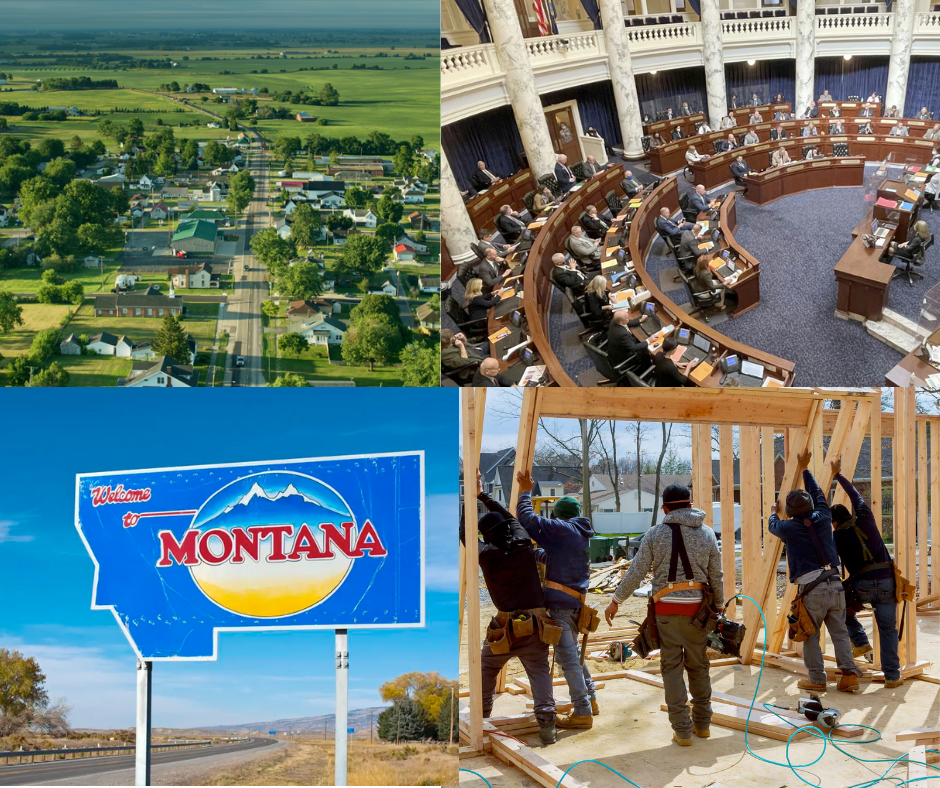This is the final article in a four-part series published by Better Wyoming looking at our state's housing crisis. Read the others here:
Part 1: What causes Wyoming's housing crisis
Part 2: Wyoming's unaffordable housing drives young people and businesses away
Part 3: Slow or none - Wyoming lawmakers' response to the housing crisis
++
Wyoming is not the only Mountain West state with a housing crisis.
The biggest difference between us and our neighbors is the response—we have done virtually nothing, while other states have taken more proactive approaches.
Fortunately, the similarity between the housing situation in Wyoming and those in other large, rectangular Western states will allow our own lawmakers to follow a playbook that is already laid out, and to learn what has worked and what has not.
Zoning + incentives + investment
Most approaches to the region’s housing problem involve some combination of zoning changes, incentives for developers, and direct investment in either building or acquiring affordable housing.
While some Wyoming cities are tinkering with their local zoning ordinances to increase affordable housing development, some entire states have deregulated zoning across the board.
In some fancier enclaves of Colorado, municipalities have outright bought trailer parks and old hotels where workers can live.
While some Wyoming cities are tinkering with their local zoning ordinances to increase affordable housing development, some entire states have deregulated zoning across the board, prohibiting towns and counties from restricting building.
One such state was Montana, where lawmakers last year made one of the largest contemporary public investments in workforce housing in the West. But it will take years to see whether average workers will be able to afford the homes that are built.
Meanwhile, other states use a variety of tools to increase affordable housing, such as public trust funds dedicated to funding housing projects, tax incentives, and state subsidies for families.
Wyoming could adopt any combination of these to address our own growing housing crisis that hurts our state’s families, communities, and economy.
‘Montana Miracle’ gets mixed reviews
Montana lawmakers took direct action to confront their state’s housing crisis, convening a task force in 2021 to develop sweeping reforms.
The task force specifically looked for solutions that wouldn’t spur sprawl that would eat up agricultural land and transform the state’s rural character.

The bipartisan Montana Land Use Planning Act last year completely rewrote the state’s land use laws, overriding local zoning ordinances and enacting laws to allow more multi-family homes and “mother-in-law” backyard homes.
Some critics complained about the state usurping local control. But Nathan Dugan, president of housing advocacy group ShelterWF, said the new laws create consistency so that zoning changes will be less confusing to residents who want to express their opinions during planning processes.
“We can have peace of mind that we know generally how our neighborhoods will change and grow, and housing developers can waste less money trying to figure out what we want,” Dugan said.
In addition to statewide zoning changes, Montana approved a $225 million spending package: $175 million for housing initiatives and $50 million for low-interest loans to developers who build rent-restricted apartments.
While the effort to increase affordable housing has been dubbed the “Montana Miracle,” it has detractors.
Despite Montana’s $2.5 billion state budget surplus, about half was used on tax cuts and rebates while lawmakers killed several measures, including a housing tax credit to incentivize affordable rental development.
It’s not enough to solve the whole problem, but it’s much more than Wyoming has done.
State housing trust funds support all sorts of solutions
Every solution to housing involves one thing: funding.
Wyoming is one of only three states that don’t have a state housing trust fund to support construction, acquisition, and preservation of affordable housing.
Nebraska’s housing trust fund supports housing-related projects, new construction or rehabilitation, and assistance for first-time homebuyers. It is distributed via public agencies and nonprofits through a competitive process. The funding comes from taxes on real estate transactions. Nebraska has awarded more than $200 million from the trust over the past 25 years.
Idaho established its state housing trust fund in 1992. But like Wyoming, lawmakers there declined to put any money in it. The fund sat empty for 30 years as the state’s shortage of affordable housing became an increasingly critical problem.
Finally, in 2022, lawmakers put $50 million into the fund that the state received in federal COVID-19 relief assistance. Now, the money is helping developers build 1,000 rental units across the state for working-class residents.
Similarly, Utah uses its state housing trust fund to build and preserve affordable housing units, primarily assisting projects for low-income residents.
Meanwhile, last year, Wyoming’s Legislature killed a bill that would have created a $15 million state housing trust fund. As the extremist Freedom Caucus prepares to take control of the capitol and its leaders promise to cut the state budget by 30 percent, it seems likely that no funding for housing will be coming that way in the near future.
Funding for blighted and abandoned properties
One tool that other states have used to fund housing projects that might gain traction in Wyoming is called “Tax Incremental Financing.”

This very wonky and complex process essentially boils down to allowing local governments to divert some local taxes specifically to housing and development, usually targeting blighted or abandoned properties.
These properties, which can be a risky investment for developers eager to turn a profit, become easier to renovate with TIF funding.
The process also allows cities to raise revenue for housing while avoiding the lengthy and costly process of asking residents to vote on a “bond issue”—a form of voluntary local taxation.
In Utah, approximately $127 million has become available to fund affordable housing in Salt Lake City under TIF legislation.
Meanwhile, Wyoming lawmakers are currently considering their own TIF bill in a legislative committee. Proponents say the program could build 120-150 affordable housing units per year.
“I’m excited about TIF’s potential in Wyoming,” Rep. Trey Sherwood (D-Laramie) said. “I want to see what the final details look like.”
Middle-class assistance
People tend to think that affordable housing is an issue that affects “poor people.”
“It’s really a wasteful use of limited tax dollars, and it’s going to have a negligible effect on the underlying causes of the housing prices in Colorado.”
But in Wyoming, there is not a single county where a middle-class family earning the local median wage can afford to buy a typical home.
The same is true in Colorado, where an escalating housing crisis has motivated the state to shift housing assistance away from low-income people toward the middle class.
Colorado has started a controversial program that uses affordable housing dollars once reserved exclusively for the working poor to subsidize rental units for middle-income families who make up to $170,000 per year.
This year, Colorado also set aside $200 million to create the nation’s first middle-income housing credit on state income taxes. Low-income housing groups opposing similar legislation at the federal level are criticizing the effort.
“It’s really a wasteful use of limited tax dollars, and it’s going to have a negligible effect on the underlying causes of the housing prices in Colorado,” Sarah Saadian of the National Low Income Housing Coalition told the Colorado Sun. “It’s going to do very little to help those who are struggling the most.”
A growing problem in need of solutions
Whatever Wyoming decides to eventually do to confront its housing crisis, the clock is ticking.
The longer officials wait, it seems, the worse the problem gets.
While families struggle to afford rent or their mortgage, young people are fleeing Wyoming alongside businesses, and our entire economy is worse off for it.
“If we don’t get ahead of this, when our population grows it’s going to be hard to do later,” Cheyenne Realtor Wendy Volk told Better Wyoming. “Other communities have found solutions, and so can we.”
The question remains: Do our political leaders have the will to actually do anything?

